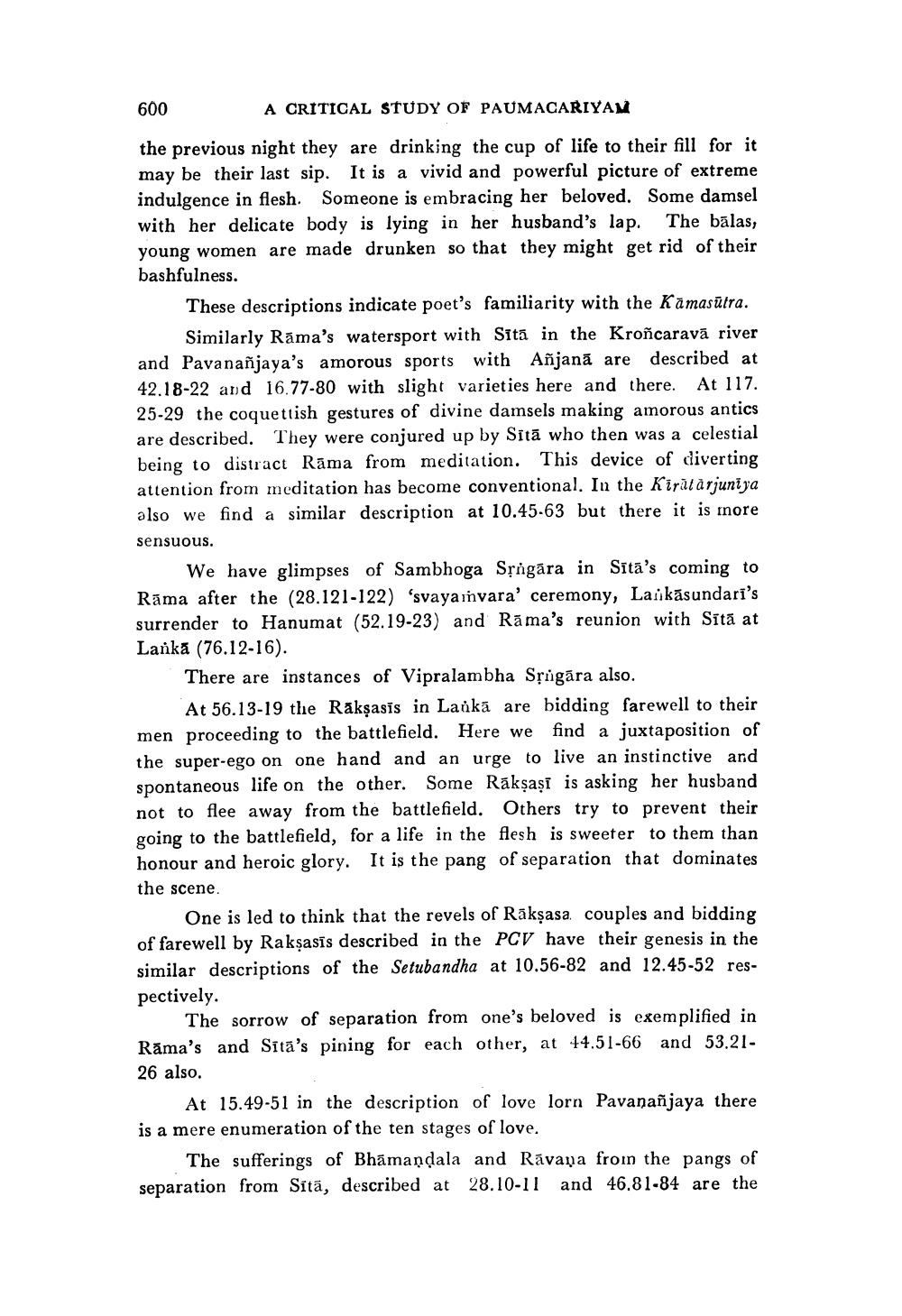________________
600
A CRITICAL STUDY OF PAUMACARIYAM
the previous night they are drinking the cup of life to their fill for it may be their last sip. It is a vivid and powerful picture of extreme indulgence in flesh. Someone is embracing her beloved. Some damsel with her delicate body is lying in her husband's lap. The bālas, young women are made drunken so that they might get rid of their bashfulness.
These descriptions indicate poet's familiarity with the Kāmasūtra.
Similarly Rama's watersport with Sita in the Kroñcaravā river and Pavanañjaya's amorous sports with Añjanā are described at 42.18-22 and 16.77-80 with slight varieties here and there. At 117. 25-29 the coquettish gestures of divine damsels making amorous antics are described. They were conjured up by Sitā who then was a celestial being to distract Rāma from meditation. This device of diverting attention from meditation has become conventional. In the Kirātărjuniya əlso we find a similar description at 10.45-63 but there it is more sensuous.
We have glimpses of Sambhoga Srågāra in Sita's coming to Rāma after the (28.121-122) 'svayanvara' ceremony, Laikāsundari's surrender to Hanumat (52.19-23) and Rāma's reunion with Sita at Lanka (76.12-16).
There are instances of Vipralambha Spågāra also.
At 56.13-19 the Rakşasīs in Laikā are bidding farewell to their men proceeding to the battlefield. Here we find a juxtaposition of the super-ego on one hand and an urge to live an instinctive and spontaneous life on the other. Some Rākşași is asking her husband not to flee away from the battlefield. Others try to prevent their going to the battlefield, for a life in the flesh is sweeter to them than honour and heroic glory. It is the pang of separation that dominates the scene
One is led to think that the revels of Rākşasa. couples and bidding of farewell by Raksasīs described in the PCV have their genesis in the similar descriptions of the Setubandha at 10.56-82 and 12.45-52 respectively.
The sorrow of separation from one's beloved is exemplified in Rāma's and Sítā’s pining for each other, at 44.51-66 and 53.2126 also.
At 15.49-51 in the description of love lorn Pavaņañjaya there is a mere enumeration of the ten stages of love.
The sufferings of Bhämandala and Rāvana from the pangs of separation from Sita, described at 28.10-11 and 46.81-84 are the




